2025 Guide to Chat Support vs Chatbot Cost Efficiency
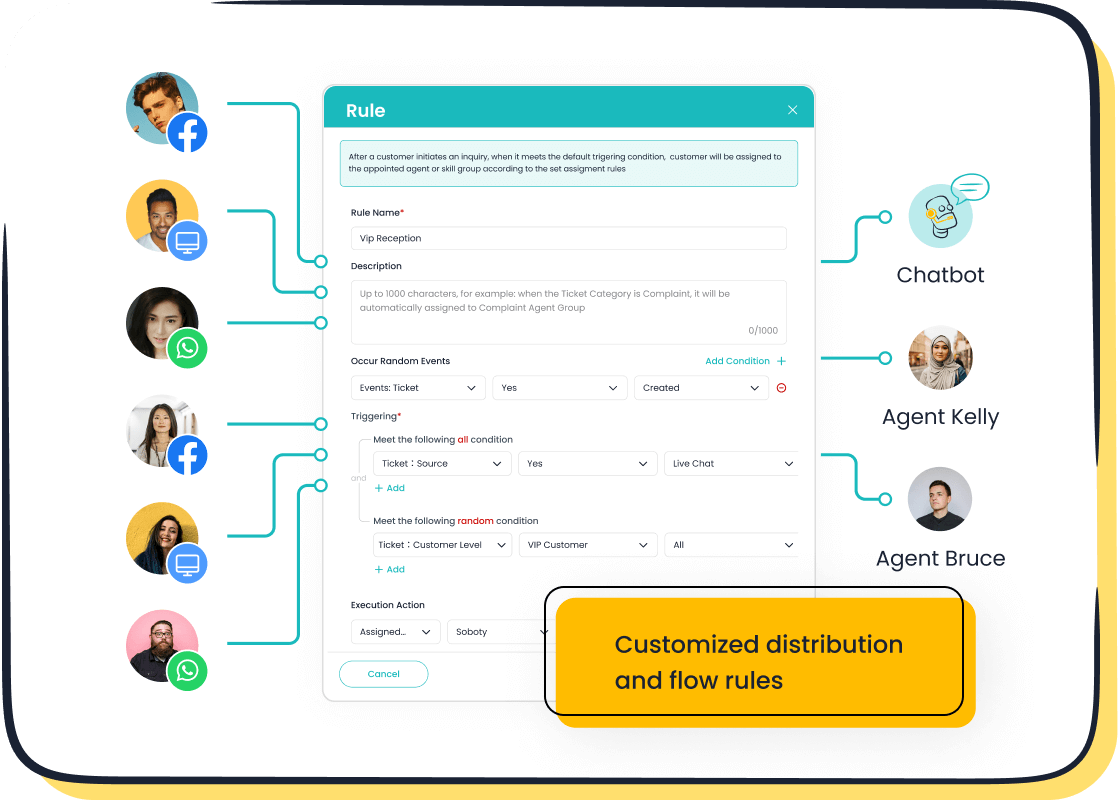
In 2025, chat support vs chat bot cost efficiency shows a clear trend: chatbots deliver significant savings and faster customer resolutions. Businesses using chatbots report average annual savings of $300,000 and a 30% reduction in support costs. The automation of routine queries, which can reach up to 90%, allows human agents to focus on complex issues. Sobot, a leader in omnichannel customer engagement, empowers companies to achieve these results. Cost efficiency in customer service now centers on ROI, operational savings, and customer satisfaction. Sobot AI combines advanced automation with human expertise, helping businesses select the right approach for their unique customer needs.
Cost Efficiency Overview
Defining Cost in Customer Service
Cost efficiency in customer service depends on understanding every element that contributes to overall costs. Companies must consider direct expenses like salaries, technology investments, and training. Indirect costs include time spent on repetitive tasks and the impact of slow responses on customer loyalty. Market research shows that focusing on strategies with proven returns helps reduce wasteful spending and improves customer satisfaction. Businesses benefit from aligning their products and services with customer preferences, which leads to optimized pricing and risk mitigation. High-quality, actionable data supports informed decisions and helps maintain cost efficiency. Continuous monitoring ensures that companies adapt to changing customer needs and market dynamics. Sobot, for example, uses advanced analytics in its Live Chat and AI solutions to help businesses track and manage customer support costs effectively.
Tip: Companies that regularly review their cost structure and adapt their customer service approach see better returns and higher customer satisfaction.
ROI and Value Metrics
A thorough cost benefit analysis requires clear ROI calculations and a deep understanding of value metrics. Financial metrics such as Customer Acquisition Cost (CAC), Lifetime Value (LTV), Gross Profit Margin, and Net Profit Margin provide a framework for evaluating customer service costs and benefits. The table below summarizes key metrics:
| Financial Metric | Definition | Formula/Explanation | Relevance to Customer Service Costs |
|---|---|---|---|
| Customer Acquisition Cost (CAC) | The cost required to acquire a single customer. It includes marketing and sales expenses. | Amount spent to gain one customer. | Directly related to customer-related costs, important for understanding customer service expenses. |
| Lifetime Value (LTV) | The average revenue a customer generates over their entire relationship with the business. | Predicted average monetary value per customer over time. | Helps assess revenue from customers, balancing CAC to evaluate customer service cost efficiency. |
| Gross Profit Margin | Percentage of revenue remaining after deducting cost of goods sold. | (Revenue – Cost of Goods Sold) / Revenue | Indicates profitability that must cover operating expenses, including customer service costs. |
| Net Profit | Total earnings after all expenses, including operating costs, taxes, and interest. | Total Revenue – Total Expenses | Reflects overall profitability after customer service and other expenses. |
| Net Profit Margin | Percentage of revenue remaining after all expenses are deducted. | Net Profit / Total Revenue | Shows how much revenue turns into profit, factoring in customer service costs as part of expenses. |
ROI calculations help businesses measure the returns on their investments in customer service. Metrics like Return on Investment (ROI), LTV:CAC ratio, and Return on Ad Spend (ROAS) guide companies in optimizing resource allocation. Sobot’s analytics tools enable organizations to track these metrics in real time, supporting ongoing cost benefit analysis and maximizing value. Companies that use these metrics can identify which strategies deliver the best returns and adjust their approach to improve profitability and customer satisfaction.
Chat Support vs Chat Bot: Cost Breakdown
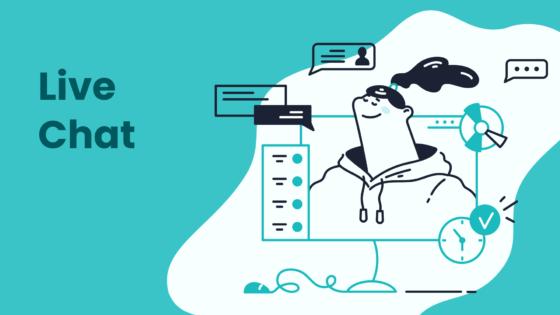
Setup and Ongoing Costs
Businesses often compare chat support vs chat bot when planning customer service investments. The initial setup and ongoing costs for each approach can differ greatly. Human chat support requires hiring, onboarding, and training agents. These costs increase as the business grows. Chatbot implementation, on the other hand, involves platform subscription fees, integration, and conversation design. Ongoing costs for chatbots include platform maintenance, AI model updates, and content tuning.
The table below summarizes typical costs for different industries and business types:
| Business Type / Industry | Chatbot Setup Costs | Ongoing Costs (Year 1 and beyond) | Key Cost Drivers and Considerations |
|---|---|---|---|
| SMB E-commerce | Off-the-shelf SaaS platform subscription, initial customization, conversation tuning | SaaS fees, tuning stabilization, messaging fees scaling with volume, content updates, minor feature improvements | Low upfront investment, pay-as-you-go messaging, simple integration, minimal internal team time |
| Global Healthcare Provider | Custom development, complex integration with EMR/EHR, security & compliance validation | Platform maintenance, security audits, compliance updates, LLM re-training, secure hosting infrastructure | High initial cost due to regulatory compliance, ongoing costs driven by security, retraining, and infrastructure |
| SaaS Startup (B2B) | Platform subscription, CRM and knowledge base integration, content creation, conversation design | Rising platform costs with growth, knowledge base updates, re-training, advanced AI features, scalability costs | Integration complexity, continuous content and feature updates, scalability as user base grows |
| Small Business Chatbot Focus | Off-the-shelf SaaS platforms, minimal coding required | Tiered subscription plans, pay-as-you-go messaging, simple maintenance and analytics | Emphasis on ease of setup, low upfront costs, and immediate value with limited resources |
| Hidden/Long-tail Expenses | N/A | Continuous LLM re-training, annual security audits, scalability costs, internal training, integration maintenance | These ongoing costs are often underestimated but critical for accurate budgeting and operational success |
| Enterprise / Regulated Industry | Custom-built or enterprise-grade platforms, on-premise or VPC hosting, extensive security | Ongoing compliance, audit logging, advanced AI model updates, role-based access control, integration maintenance | High complexity and cost driven by regulatory requirements, security, and need for customization and scalability |
Human chat support costs rise with each new agent. Chatbot implementation offers predictable, scalable pricing. Businesses can control customer support costs by choosing the right mix of automation and human support. Sobot Live Chat provides a unified workspace, reducing the need for multiple tools and lowering infrastructure costs.
Note: Accurate cost benefit analysis must include hidden expenses like ongoing AI training, compliance, and integration maintenance.
Scalability and Flexibility
Scalability and efficiency play a major role in the chat support vs chat bot debate. Human agents can only handle a limited number of conversations at once. Chatbots, powered by AI, can manage thousands of queries per second. This level of automation leads to significant cost savings and improved efficiency.
- AI chatbots handle up to 5,000 customer queries per second, far surpassing human capacity.
- Chatbots reduce response times by 99%, delivering instant replies.
- Automation through chatbots saves $8 billion annually by reducing the need for large support teams (source).
- Chatbots operate 24/7, never needing breaks or downtime.
- Standalone chatbots offer customization and offline capabilities for industries with unique needs.
- Cloud-based chatbot implementation allows businesses to scale resources up or down based on demand.
- Subscription and pay-as-you-go models make chatbot implementation accessible for small and medium enterprises.
- Integration with analytics tools helps optimize chatbot performance and user experience.
Cloud deployment leads market growth due to its flexibility and cost-effectiveness. Services supporting chatbot deployment, customization, and integration are expanding rapidly. Customer service chatbots dominate the market by automating repetitive tasks and reducing operational costs. Continuous chatbot training supports scalability and efficiency in diverse environments.
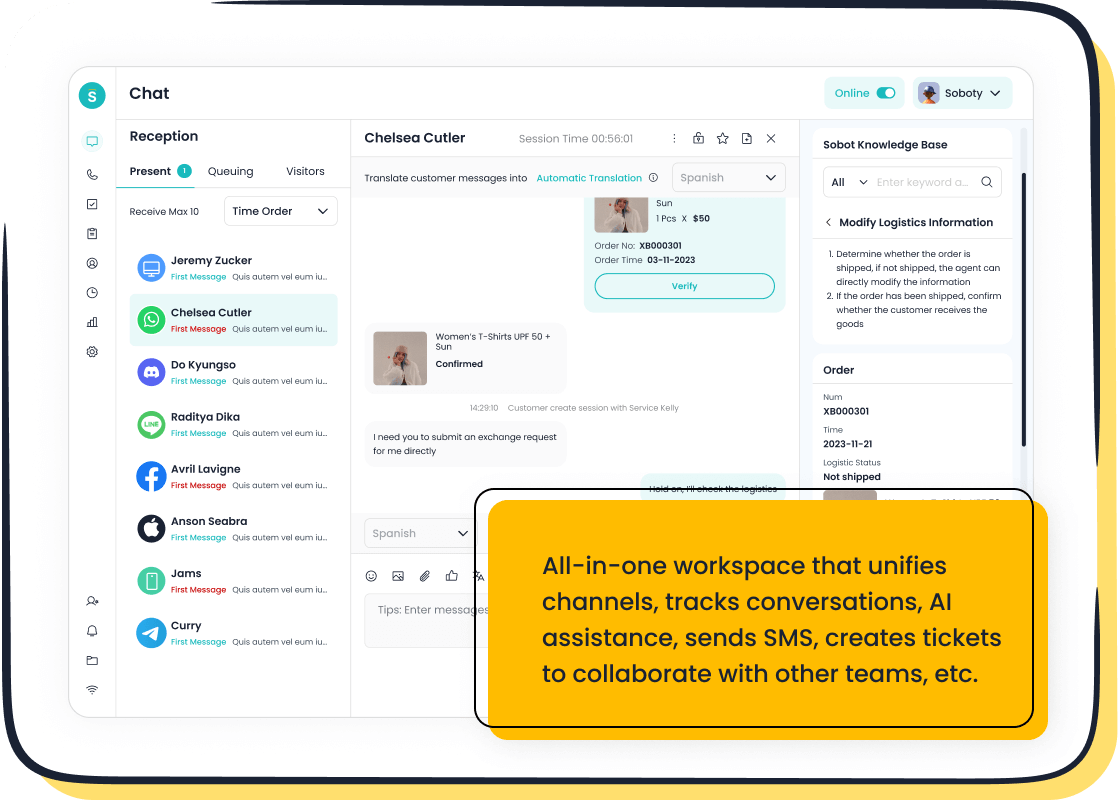
Sobot Live Chat Advantages
Sobot Live Chat stands out in the chat support vs chat bot landscape by combining omnichannel support, automation, and AI-driven insights. The platform unifies all customer conversations, tickets, and data in one workspace. This integration streamlines operations and reduces costs.
Market data shows Sobot Live Chat delivers measurable benefits:
| Metric / Case Study | Data / Result | Explanation / Impact on Efficiency and Cost Management |
|---|---|---|
| Agent Workload Reduction | 60% reduction | Lowers human agent effort, improving operational efficiency. |
| Conversion Rate Increase | 15% increase | Boosts sales effectiveness, contributing to better ROI. |
| ROI | 234% | Demonstrates strong financial return, supporting cost management benefits. |
| Knowledge Base Operation Workload | Up to 90% reduction | AI Agent automates knowledge management, reducing operational costs. |
| Direct Response Rate Improvement | 15%-35% increase | Faster and more accurate customer responses improve efficiency. |
| Answer Accuracy Increase | 5%-15% increase | Higher accuracy reduces rework and customer dissatisfaction. |
| Omnichannel Integration | All-in-one platform | Eliminates need for multiple systems, lowering infrastructure costs. |
| Pricing | Up to 50% lower than competitors | Directly reduces expenditure on customer service tools. |
| OPPO Customer Satisfaction (CSAT) | 93% | Indicates improved service quality and operational effectiveness. |
| J&T Express Operational Metrics | 35% boost in sign-off rate, 40% increase in COD collection | Shows tangible operational improvements and revenue collection efficiency. |
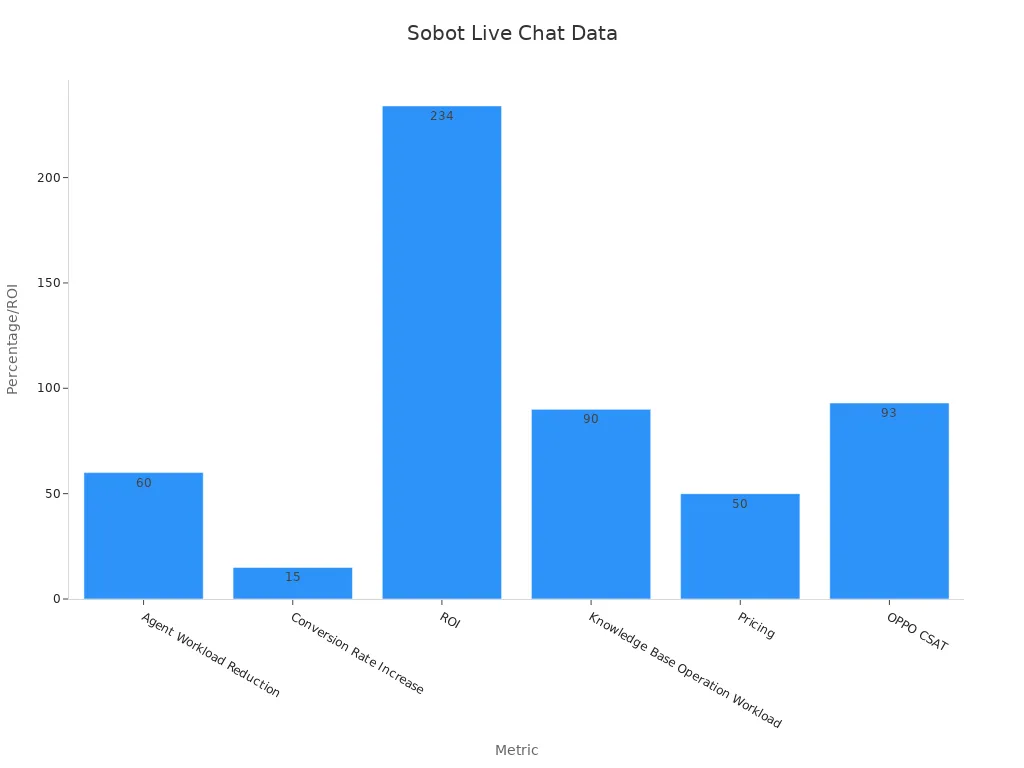
Sobot’s AI-powered automation reduces human workload and improves response accuracy. The platform’s chatbot implementation supports multilingual communication, making it ideal for global businesses. Sobot’s cost benefit analysis tools help companies track ROI, optimize customer support costs, and maximize savings. The unified platform ensures seamless scalability and efficiency, supporting both automated customer service and human agent collaboration.
Tip: Businesses that leverage Sobot’s omnichannel automation and AI tools achieve higher ROI, lower costs, and improved customer satisfaction.
Customer Satisfaction and Experience
Quality of Support
Customer satisfaction depends on the quality of support a business provides. Companies now focus on delivering fast, accurate, and personalized service. Many combine ai customer support with human agents to balance efficiency and empathy. Studies show that 86% of customers prefer human agents for complex issues, while chatbots handle simple questions quickly. This approach increases customer satisfaction scores and improves overall performance.
Key metrics help companies measure support quality:
| Metric Name | Description | Purpose |
|---|---|---|
| First Contact Resolution Rate | Percentage of customer issues resolved during the first interaction. | Measures prompt problem-solving. |
| Average Response Time | Average time for an agent to reply to a customer's first message. | Shows speed of support. |
| Net Promoter Score (NPS) | Customer willingness to recommend the service. | Assesses loyalty and satisfaction. |
| Customer Satisfaction Score | Percentage of customers satisfied with support. | Measures happiness with service. |
| Agent Utilization Rate | Time agents spend helping customers compared to total working time. | Tracks agent efficiency. |
Sobot Live Chat uses these metrics to monitor performance. The platform unifies all customer conversations, making it easier for agents to deliver high-quality support. AI tools help agents respond faster and more accurately, which boosts customer satisfaction and efficiency.
Sobot AI and Customer Feedback
Sobot AI transforms customer experiences by combining automation with human expertise. The platform supports omnichannel engagement, allowing customers to reach support through websites, apps, and social media. This flexibility increases efficiency and customer satisfaction.
Recent studies highlight the impact of improved service:
| Statistic Description | Supporting Data |
|---|---|
| Companies prioritizing CX in contact centers | 88% |
| Competition based on CX | Over two-thirds |
| Investment in omni-channel experience | Over 80% |
| Business growth from omni-channel engagement | 10% YoY growth, 25% higher close rates |
| Impact of AI on customer satisfaction and performance | 80% of executives report improvements |
Sobot’s ai customer support delivers instant answers and routes complex issues to human agents. This approach raises customer satisfaction scores and agent efficiency. OPPO, a global smart device brand, used Sobot’s chatbot and ticketing system to manage high volumes of customer inquiries. The result: an 83% chatbot resolution rate, a 94% positive feedback rate, and a 57% increase in repurchase rate. These outcomes show how Sobot’s AI and human collaboration drive customer satisfaction and business performance.
Note: Companies that invest in ai customer support and human collaboration see higher customer satisfaction, better efficiency, and improved business results.
ROI Comparison: Chat Support vs Chat Bot
Operational Savings
Businesses measure operational savings by tracking several key metrics. These include deflected ticket volume, average cost per support interaction, average handling time, first contact resolution, and containment rate. Companies often use a cost benefit analysis to compare the impact of chat support and chatbot solutions. Chatbots reduce the need for human agents by handling routine questions. This leads to lower labor costs and higher efficiency.
- Deflected ticket volume shows how many customer issues chatbots resolve without human help.
- Average cost per support interaction drops when chatbots manage simple requests.
- Average handling time decreases as chatbots gather information before passing complex cases to agents.
- First contact resolution improves because chatbots provide instant answers.
- Containment rate measures the percentage of customer inquiries solved by chatbots alone.
A typical ROI calculation might look like this:
| Metric | Chat Support (Human) | Chatbot Solution |
|---|---|---|
| Average Cost per Ticket | $5 | $0.50 |
| Deflected Tickets per Month | 1,000 | 5,000 |
| Monthly Savings | - | $22,500 |
| First Contact Resolution Rate | 70% | 90% |
| 24/7 Availability | No | Yes |
Companies subtract chatbot operational costs from total cost savings to find net savings. These savings can fund new hires, agent training, or improved customer experience programs. Sobot’s AI customer support platform helps businesses track these metrics in real time. The platform uses advanced analytics to monitor performance and maximize ROI. Sobot’s unified workspace also reduces infrastructure costs by combining chat, ticketing, and analytics in one place.
Tip: Regular cost benefit analysis ensures that companies capture all operational savings and adjust their strategy for the best returns.
Business Growth Impact
Chatbots drive business growth by increasing sales, improving productivity, and enhancing customer satisfaction. Companies using chatbots report up to a 67% increase in sales due to 24/7 availability and personalized interactions. Chatbots qualify leads efficiently, which boosts conversion rates and lead quality. Businesses also see a 50% rise in productivity as chatbots automate routine tasks, freeing agents to focus on complex issues.
Chatbots scale easily during peak demand, maintaining service quality without extra staffing costs. Fast response times give companies a competitive edge. Metrics such as conversion rates, response times, customer satisfaction scores, and ROI calculations help measure the value of chatbot solutions. Market forecasts predict retail chatbot spending will grow from $12 billion in 2023 to $72 billion by 2028 (Juniper Research).
Chatbots also serve as 24/7 support agents, providing consistent customer service across time zones. They deliver personalized product recommendations, increase average order values, and reduce cart abandonment. Over one-third of companies in 2023 reported increased revenue from customer service automation. Sobot’s AI customer support platform enables businesses to achieve these benefits by integrating chatbots with sales and marketing systems.
Note: Companies that invest in AI and automation see higher ROI, faster returns, and stronger business growth.
Sobot Case Study Insights
Sobot’s solutions deliver measurable ROI and cost savings for leading brands. OPPO, a global smart device company, partnered with Sobot to handle high volumes of customer inquiries. By deploying Sobot’s chatbot and ticketing system, OPPO achieved an 83% chatbot resolution rate and a 94% positive feedback rate. The company also saw a 57% increase in repurchase rate, showing the value of improved customer experience.
Sobot’s AI platform reduced OPPO’s knowledge base maintenance workload by 90%. This operational benefit allowed agents to focus on complex customer needs. The unified platform integrated global customer channels and business systems, improving data accessibility and service quality. Sobot’s cost benefit analysis tools helped OPPO track performance and optimize returns.
Other Sobot clients, such as J&T Express, reported a 35% boost in sign-off rate and a 40% increase in cash-on-delivery collection. These results highlight the value of Sobot’s AI-driven automation and omnichannel support. Businesses using Sobot’s solutions benefit from higher ROI, lower costs, and improved customer satisfaction.
Sobot’s case studies show that combining AI, automation, and human expertise leads to strong operational savings, business growth, and lasting value.
Industry Applications and Best Fit
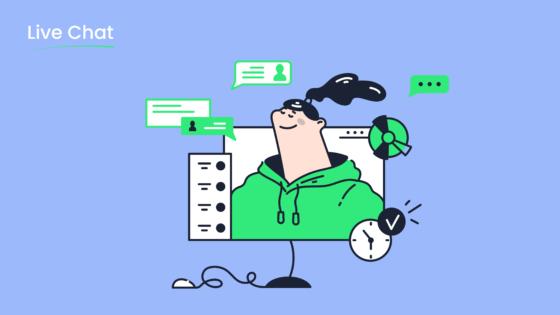
Retail and E-Commerce
Retail and e-commerce companies lead the way in chatbot implementation. Over 70% of chatbot conversations in 2023 involved retail conversational AI systems. About 40% of U.S. consumers have used chatbots to engage with retail brands. These businesses see clear cost benefit analysis results, as chatbots help with product search, order tracking, and customer education. Shoppers value ease of finding products (58%), quality customer service (44%), and fast checkouts (42%). Chatbot automation supports these needs by providing instant answers and reducing wait times.
| Evidence Type | Details |
|---|---|
| Chatbot Usage Statistics | Over 70% of chatbot conversations in 2023 involved retail conversational AI systems. |
| 40% of U.S. consumers have used chatbots to engage with retail. | |
| 54% of consumers had daily AI-enabled interactions with retail organizations as of 2020. | |
| Benchmark Data (NRF) | 58% of shoppers value ease of finding products. |
| 44% prioritize quality customer service. | |
| 42% emphasize speedy and simple checkouts. | |
| Top 12 Retail Chatbot Use Cases | Product search, recommendations, order placement, tracking, FAQs, feedback, and more. |
| Concrete Example | Staples uses IBM Watson’s chatbot on Facebook Messenger, Slack, and texting to facilitate orders. |
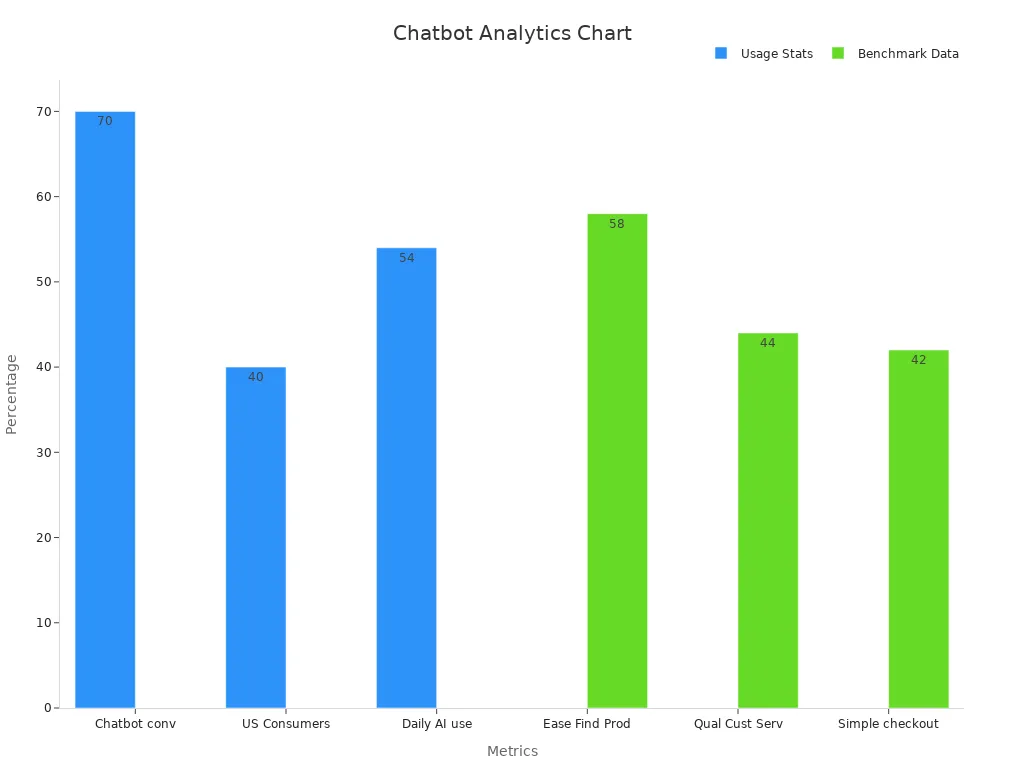
Sobot’s AI-powered chatbots and omnichannel support help retail brands deliver consistent, automated customer service across all platforms.
Financial Services
Financial services organizations rely on chatbot implementation to manage high interaction volumes and reduce cost. Top banks use chatbots for basic inquiries, showing strong cost benefit analysis results. About 37% of the U.S. population interacted with bank chatbots in 2022. Solutions like Capital One’s Eno and Bank of America’s Erica handle millions of conversations, proving the benefit of automation. However, human support remains essential for complex issues. Sobot’s AI-driven chatbots balance automation and human expertise, ensuring compliance and customer trust.
- Financial institutions use chatbots to cut costs and improve efficiency.
- Chatbot automation works best for simple tasks, while human agents handle complex needs.
- Sobot’s secure, scalable solutions support compliance and privacy requirements.
Enterprise and Call Centers
Enterprises and call centers use chatbot implementation to achieve cost benefit analysis goals and improve scalability. Metrics like Bot Experience Score and Bot Automation Score help measure chatbot efficiency. Cost per automated conversation and agent experience scores guide operational improvements. Sobot’s AI chatbots and live chat tools enable enterprises to automate routine tasks, reduce handle time, and boost customer satisfaction.
- Enterprises benchmark chatbot and human agent performance to optimize spending.
- Automation and AI improve resource allocation and employee satisfaction.
- Sobot’s unified platform supports large-scale chatbot implementation and seamless human collaboration.
Sobot Solution Highlights
Sobot delivers unique benefits through advanced AI, automation, and omnichannel integration. The platform combines WhatsApp Business API, AI-powered chatbots, and customizable features for diverse industries. Sobot’s solutions reduce response times, increase customer satisfaction, and automate routine inquiries. Clients report up to 25% higher satisfaction ratings and improved operational efficiency. Sobot’s user-friendly, scalable platform supports cost benefit analysis, making it ideal for retail, financial services, and enterprise environments.
- Sobot’s AI chatbots and automation tools streamline customer communication.
- The platform’s scalability and customization fit businesses of all sizes.
- Sobot’s solutions help companies achieve cost savings, better service, and lasting customer loyalty.
Choosing the Right Solution
Small Business Needs
Small businesses often face tight budgets and limited resources. They need a customer service solution that delivers maximum benefit with minimal complexity. Decision frameworks recommend that leaders define clear business goals, audit customer feedback, and segment their audience before selecting a solution. For many small businesses, chatbot implementation offers a cost-effective path to automation and efficiency. A chatbot can automate up to 70% of common inquiries, provide 24/7 support, and scale as the business grows. This approach saves over 8 hours of agent time daily, which can translate to $4,800 in monthly savings. The table below compares typical options:
| Solution Type | Monthly Cost (SMBs) | Key Benefit | Considerations |
|---|---|---|---|
| Chatbot | $30 - $150 | Automates routine tasks, reduces costs, supports multilingual needs | Requires initial setup and training |
| Human Chat Support | $2,500+ | Personalized interaction, advanced integrations | Higher cost, needs dedicated staff |
A chatbot implementation allows small businesses to focus on growth while maintaining high-quality service. Sobot’s AI-powered chatbot platform provides easy integration and real-time analytics, making it a strong choice for SMBs.
Mid-Size and Large Enterprises
Mid-size and large enterprises require robust solutions that handle high volumes and complex workflows. These organizations benefit from structured decision-making frameworks such as the CIRCLES Method or Phoenix Checklist. Enterprises often combine chatbot implementation with human support to address diverse customer needs. AI-driven analytics help segment customers and prioritize feedback, ensuring the right mix of automation and personal touch.
Sobot’s omnichannel platform supports seamless integration across multiple channels. Enterprises can leverage AI to automate routine inquiries, while human agents manage complex cases. This approach improves efficiency, reduces operational costs, and enhances customer satisfaction. Real-time insights and customizable workflows allow enterprises to align customer service with strategic goals.
Tip: Enterprises that align AI and human support with business objectives see higher ROI and improved customer loyalty.
Hybrid Approaches with Sobot
A hybrid approach blends the strengths of chatbot automation and human expertise. Studies show that combining AI for routine tasks with human agents for complex issues reduces customer complaints by 20% and increases retention by 10%. Hybrid implementation can cut support costs by up to 30% and boost satisfaction by 34%. Sobot’s hybrid model enables businesses to route simple queries to chatbots and escalate complex cases to human agents.
Sobot’s AI-driven solutions personalize engagement, leading to up to 41% higher conversion rates. The platform’s unified workspace ensures smooth collaboration between AI and human teams. Companies using hybrid models with Sobot report faster response times, better customer experiences, and measurable cost savings.
Note: Hybrid implementation with Sobot delivers the benefit of automation and the empathy of human support, creating a balanced and scalable customer service strategy.
In 2025, businesses see clear advantages with chatbot solutions. Companies achieve a 70% self-service rate, a 15% sales success rate, and lower cost per chat. The table below highlights key metrics:
| Metric | Chatbot Value | Live Chat Value |
|---|---|---|
| Cost per Chat | $0.50 | $6–$14 |
| Self-Service Rate | 70% | 0% |
| ROI | High | Moderate |
| Customer Satisfaction | High CSAT/NPS | High CSAT/NPS |
Sobot’s AI and Live Chat help companies maximize roi, automate support, and improve customer satisfaction. To optimize roi, leaders should monitor analytics, adjust chatbot workflows, and balance automation with human support. Sobot provides tailored solutions for every industry.
FAQ
What is the main cost difference between chat support and chatbot implementation?
Chatbot implementation usually requires a lower upfront investment and offers predictable monthly costs. Human chat support involves ongoing salaries, training, and infrastructure. Sobot’s AI-powered solutions help businesses reduce customer service costs by up to 30%, increasing overall savings and efficiency.
How does automation impact customer satisfaction scores?
Automation provides instant answers and reduces wait times. Studies show that automated customer service can improve customer satisfaction scores by 20%. Sobot’s AI customer support platform uses automation to deliver fast, accurate responses, which boosts satisfaction and supports higher ROI.
Can chatbots scale with business growth?
Yes. Chatbots offer excellent scalability and efficiency. They handle thousands of conversations at once, unlike human agents. Sobot’s chatbot implementation supports omnichannel engagement, making it easy for businesses to grow without increasing customer support costs.
What are the benefits of a hybrid approach with Sobot?
A hybrid approach combines automation for routine tasks and human agents for complex issues. This model improves performance, increases customer satisfaction, and delivers cost savings. Sobot’s unified platform enables seamless collaboration, ensuring high-quality service and strong returns.
How does Sobot help with cost benefit analysis and ROI calculations?
Sobot provides built-in analytics and reporting tools. These features track customer service costs, measure ROI, and highlight areas for improvement. Businesses use Sobot’s data-driven insights to optimize performance, maximize value, and achieve better returns on their customer support investments.
See Also
A Comprehensive Guide To Comparing Live Chat Costs
Ways Chatbots Enhance Customer Experience In E-commerce
Improve The Effectiveness Of Your Round The Clock Chat
